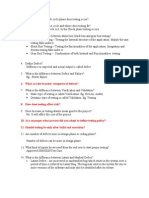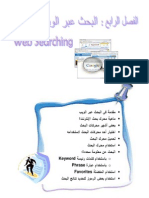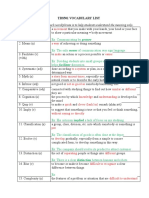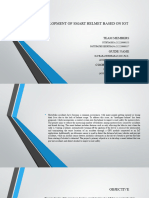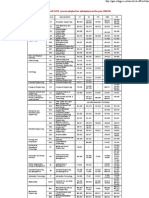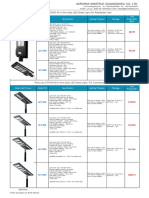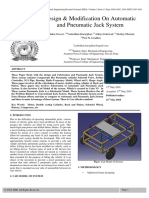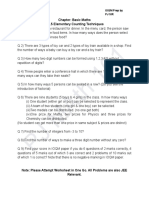0% found this document useful (0 votes)
14 views4 pagesSoftware Question
The document contains a comprehensive list of questions related to software development, testing methodologies, and project management. It covers topics such as Agile models, software testing types, design documentation, and estimation methods. Additionally, it includes specific inquiries about testing roles, software quality, and various software development life cycle models.
Uploaded by
rajashreer713Copyright
© © All Rights Reserved
We take content rights seriously. If you suspect this is your content, claim it here.
Available Formats
Download as PDF, TXT or read online on Scribd
0% found this document useful (0 votes)
14 views4 pagesSoftware Question
The document contains a comprehensive list of questions related to software development, testing methodologies, and project management. It covers topics such as Agile models, software testing types, design documentation, and estimation methods. Additionally, it includes specific inquiries about testing roles, software quality, and various software development life cycle models.
Uploaded by
rajashreer713Copyright
© © All Rights Reserved
We take content rights seriously. If you suspect this is your content, claim it here.
Available Formats
Download as PDF, TXT or read online on Scribd
/ 4




























